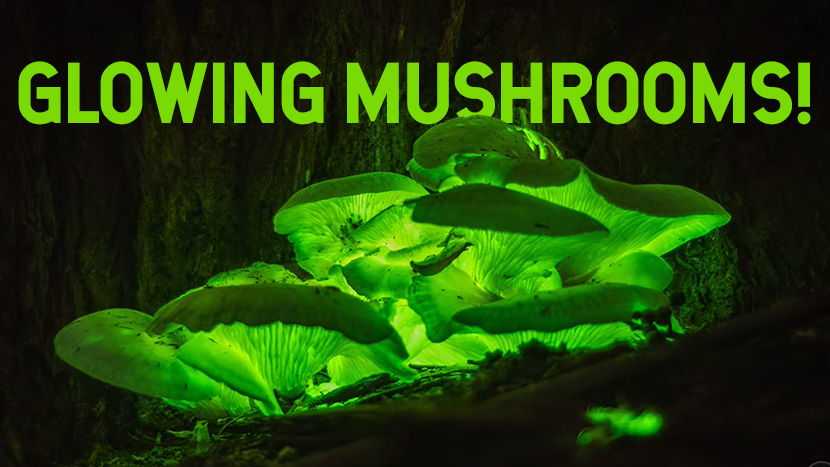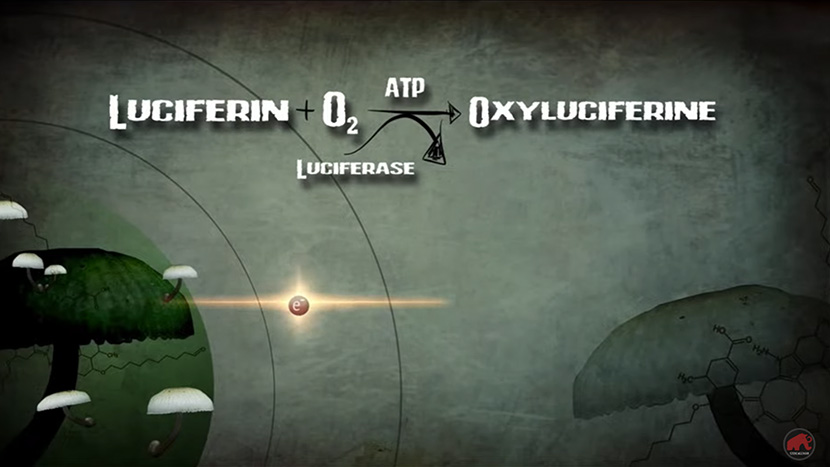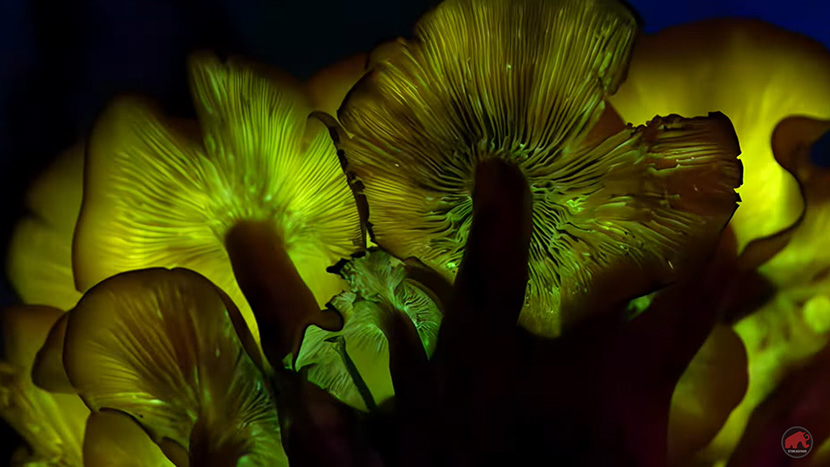How and Why do Some Mushrooms Glow?
The more we learn about the world of fungi, the more amazing discoveries unfold. From the horror-inspiring cordyceps that take over insects’ bodies to help them spread their spores, to gigantic honey fungi that stretch over 10 square kilometres, and the mysterious Jack O’ Lantern mushroom that glows at night, we continue to be amazed by this incredible kingdom of organisms.
Bioluminescent mushrooms for example are something that have fascinated people for a long time. Even though we now know that it isn’t magic making these fruiting bodies glow, it remains an intriguing subject to study. So how do mushrooms glow? And why do they glow? Let’s get into it!
How do Mushrooms Glow?
Bioluminescence is the phenomenon when a living thing produces light. There are many different mechanisms for this depending on the plant, animal, bacteria, or fungi creating the light. Also, the reasons why they create light are just as diverse. In fungi, like the famous Jack O’ Lantern fungus, there is a fairly simple reaction that occurs, resulting in a cool green glow.
The Reaction
Glowing fungi use a simple reaction to produce light. A compound called Luciferin combines with Oxygen via an enzyme called luciferase and with a bit of ATP (energy from the fungi’s metabolism) is turned into oxyluciferin. When this happens, a valence electron is excited in the molecule and enters an “excited state” where it will jump up an energy level. However, the electron will not stay here for long. As the electron moves back down to its ground state, it releases energy as light, and the mushroom glows! This reaction is super efficient, since light is emitted without heat.
Why do Mushrooms Glow?
Like most amazing phenomena, there are a couple of theories about why fungi would glow, but the most accepted theory so far has to do with spore dispersal. If you have ever seen a light on at night, what is something you will almost always notice? Insects! Long story short, insects are attracted to lights in the night, so they are attracted to these glowing mushrooms.
When an insect lands on the gills of a mushroom, the part that emits light, they get covered in mushroom tiny spores. When the insects leave they take the spores with them to new habitats. This helps the fungus to spread to new areas! Essentially, the fungus tricks insects into being their spore dispersal mechanism, since there really isn’t any benefit for the insects. This is known as commensalism, a type of symbiosis where one party benefits and the other neither benefits nor is harmed.
In Short
There are a number of fungi that glow, including the Jack O’ Lantern mushroom. Bioluminescent fungi glow by a reaction that excites an electron, releasing energy as light when that electron returns to its ground state. They do this in order to attract nocturnal insects. The insects then pick up the mushrooms spores and help disperse them to new areas. This is a commensal relationship where the fungi benefits and the insect does not benefit but is not harmed. Fungi are amazing!
Learn more about Jack O’ Lantern Mushrooms:



































































































